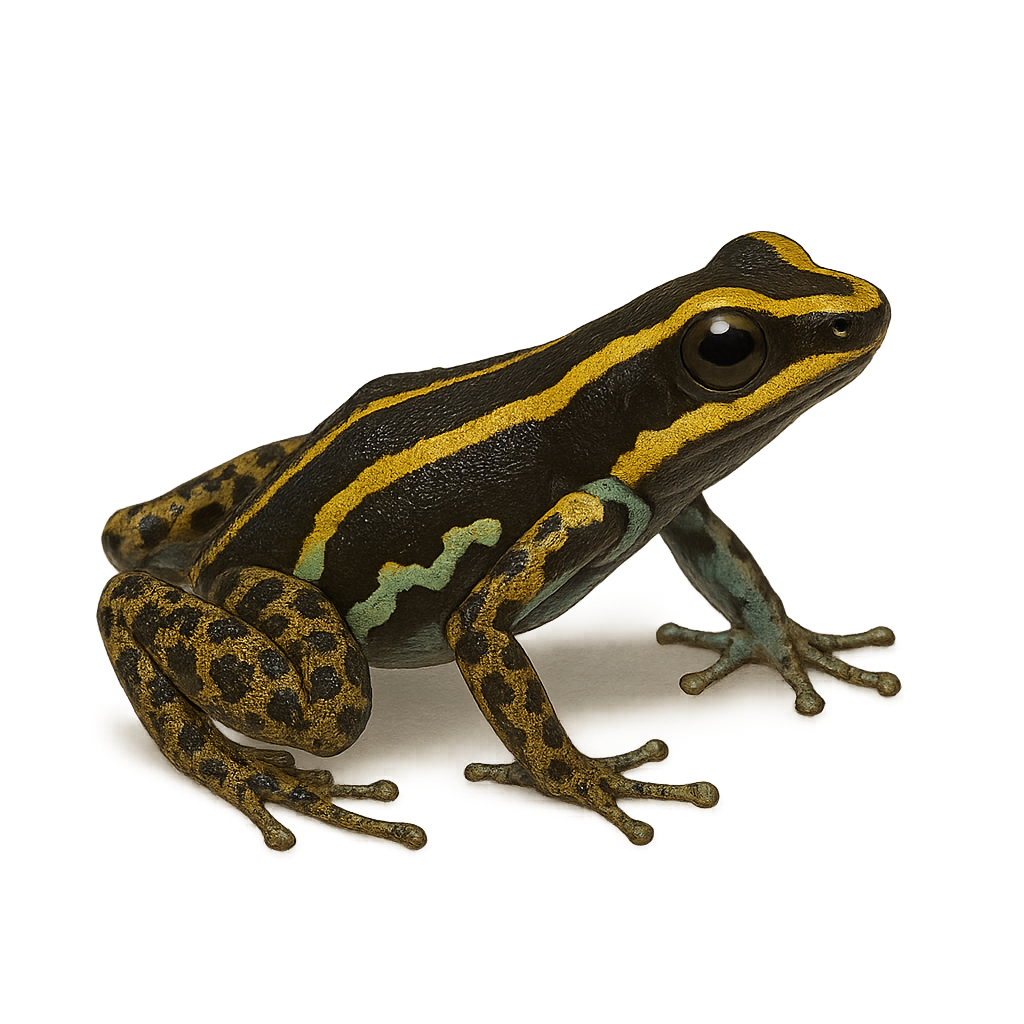Your wildlife photography guide.
Explore the lovely poison frog in detail, study its behavior, prepare your shots.
Where to observe and photograph the lovely poison frog in the wild
Learn where and when to spot the lovely poison frog in the wild, how to identify the species based on distinctive features, and what natural environments it inhabits. The WildlifePhotographer app offers tailored photography tips that reflect the lovely poison frog’s behavior, helping you capture better wildlife images. Explore the full species profile for key information including description, habitat, active periods, and approach techniques.
Lovely Poison Frog
Scientific name: Phyllobates lugubris

IUCN Status: Least Concern
Family: DENDROBATIDAE
Group: Amphibians
Sensitivity to human approach: Suspicious
Minimum approach distance: 10 m
Reproduction period: April to June
Incubation: 9-14 jours
Births: April to June
Habitat:
Lowland humid forests, forest litter near slow-moving streams
Activity period :
Primarily active during the day, with peak activity in the morning and late afternoon.
Identification and description:
The Lovely Poison Frog is a small, diurnal terrestrial frog, measuring about 2.5 cm in length. Its body is black with two bright yellow to orange longitudinal stripes on the back, and blue-green marbling on the flanks and limbs. This species inhabits lowland humid forests, often near slow-moving streams, between 10 and 650 m elevation. It primarily feeds on small invertebrates such as ants and spiders. Although its skin contains toxic alkaloids, including batrachotoxins, their concentration is low and sometimes undetectable. The Lovely Poison Frog is listed as Least Concern by the IUCN, but is locally threatened by deforestation and pollution.
Recommended lens:
Macro – adjust based on distance, desired framing (portrait or habitat), and approach conditions.
Photography tips:
Use a macro lens to capture the colorful details of the Lovely Poison Frog. Photograph it early in the morning or late in the afternoon, when humidity is high and it is active. Be discreet to avoid disturbing its natural behavior.
The WildlifePhotographer App is coming soon!
Be the first to explore the best nature spots, track rutting seasons, log your observations, and observe more wildlife.
Already 1 431 wildlife lovers subscribed worldwide

